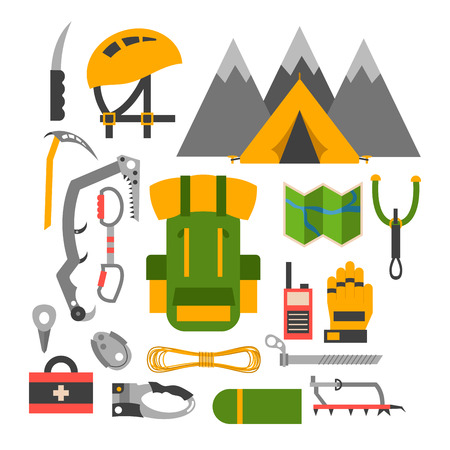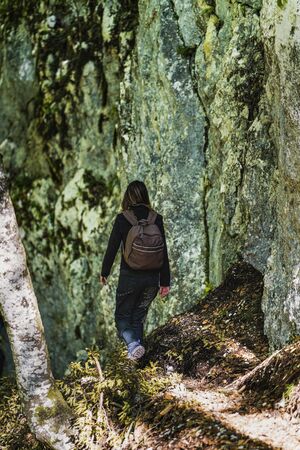1. The Principles of Low-Impact Backpacking
Backpacking with a small footprint means more than just packing light — it’s about protecting the places we love to explore. By following the core principles of low-impact backpacking, especially those outlined in the Leave No Trace (LNT) ethics, we can enjoy nature responsibly and ensure it stays beautiful for future adventurers.
Understanding Leave No Trace Ethics
The Leave No Trace principles are a set of outdoor ethics designed to promote conservation in the outdoors. These guidelines help reduce human impact on natural environments, especially in backcountry areas where ecosystems are fragile.
Key Leave No Trace Principles
| Principle | Description |
|---|---|
| Plan Ahead and Prepare | Research your route, check regulations, and pack essential gear to avoid emergencies that could lead to environmental damage. |
| Travel and Camp on Durable Surfaces | Stick to established trails and campsites; avoid trampling vegetation or creating new paths. |
| Dispose of Waste Properly | “Pack it in, pack it out.” Carry all trash with you, use waste disposal bags, and bury human waste at least 6-8 inches deep and 200 feet from water sources. |
| Leave What You Find | Avoid picking plants or disturbing wildlife habitats. Leave rocks, plants, and historical items as you found them. |
| Minimize Campfire Impact | If fires are allowed, use established fire rings or consider using a camp stove. Burn only small sticks found on the ground. |
| Respect Wildlife | Observe animals from a distance. Never feed wildlife or leave food scraps behind. |
| Be Considerate of Others | Keep noise levels down, yield to other hikers on trails, and respect everyones experience in nature. |
Sustainable Campsite Selection
Picking the right spot to pitch your tent is essential for reducing your impact. Always choose an existing campsite if one is available. If you’re venturing into less-traveled areas, look for durable surfaces like gravel, sand, dry grass, or snow. Avoid camping within 200 feet of lakes and streams to protect fragile riparian zones.
Smart Waste Management
No one wants to find someone else’s trash on the trail. Pack out all litter — even tiny things like food wrappers or used matches. For human waste, dig a cathole 6–8 inches deep (in soil) and at least 200 feet away from any water source, trail, or campsite. Use biodegradable toilet paper sparingly or carry it out in a sealed bag. Many ultralight backpackers also carry WAG bags when required by regulations.
Treading Lightly on the Trail
Your footsteps matter. Stay on designated paths whenever possible to avoid widening trails or damaging plant life along the edges. If you must go off-trail, spread out as a group and walk on durable surfaces like rocks or dry grasses to minimize erosion and wear.
Sustainable Tip:
Aim to leave each place better than you found it — pick up stray litter even if it’s not yours. Small actions add up!
This low-impact mindset is at the heart of sustainable ultralight backpacking — it’s about enjoying wild places while preserving their beauty and integrity for everyone who comes after you.
2. Choosing Ultralight Gear with Sustainability in Mind
When youre planning a backpacking trip and want to keep your footprint small—both in terms of gear weight and environmental impact—it’s all about finding the right balance. Ultralight gear helps you move faster and more comfortably, but it’s important to choose items that are also made with sustainable practices. Heres how to make smart choices when picking eco-friendly ultralight gear.
Think About the Materials
The materials used in your gear play a big role in both weight and sustainability. Look for recycled or responsibly sourced fabrics whenever possible. Some common sustainable options include:
| Material | Sustainability Benefit | Used In |
|---|---|---|
| Recycled Nylon/Polyester | Reduces waste and energy use compared to virgin materials | Tents, backpacks, rain jackets |
| Dyneema® Composite Fabric (DCF) | Lightweight, durable, and has a long lifespan | Shelters, stuff sacks, backpacks |
| Organic Cotton or Hemp Blends | Lower pesticide use, biodegradable | Base layers, camp clothing |
Check Manufacturing Practices
Sustainability goes beyond materials—how a product is made matters too. Support brands that are transparent about their manufacturing processes. Certifications to look for include:
- bluesign®: Ensures responsible use of resources and safe production practices.
- Fair Trade Certified™: Supports fair wages and safe working conditions.
- Climate Neutral Certified: Companies that offset their carbon emissions.
Durability Over Disposability
Ultralight doesn’t mean flimsy. Choosing well-made gear means you’ll replace it less often, which is better for the planet—and your wallet. Trusted outdoor brands have worked hard to design lightweight products that don’t sacrifice durability. Here are some examples of reliable brands and what they offer:
| Brand | Sustainable Focus | Popular Ultralight Gear |
|---|---|---|
| Patagonia | Uses recycled materials, Fair Trade Certified™, transparent supply chain | Nano Puff Jacket, R1 Air Fleece |
| Zpacks | Makes ultralight gear with Dyneema®, focuses on minimal waste manufacturing | Plex Solo Tent, Arc Haul Backpack |
| Hyperlite Mountain Gear | Specializes in DCF-based products for long-lasting performance | Southwest Pack, Ultamid Shelter |
| NEMO Equipment | PFC-free waterproofing, strong repair program, Climate Neutral Certified | Dagger OSMO Tent, Tensor Sleeping Pad |
A Few Extra Tips for Eco-Friendly Packing
- Repair before replacing: A patch kit can extend the life of tents and jackets.
- Buy used or trade gear: Extend the lifecycle of items and reduce demand for new production.
- Avoid single-use items: Reusable utensils, water bottles, and food containers go a long way.
Selecting ultralight gear with sustainability in mind takes a little extra research but pays off on the trail—and for the planet.

3. Eco-Friendly Essentials: Must-Have Sustainable Gear
When youre hitting the trail with sustainability in mind, choosing eco-friendly gear is just as important as going ultralight. The good news? You dont have to sacrifice performance to reduce your environmental impact. Here are some must-have items that keep your backpacking adventures green and clean.
Solar-Powered Lights
Instead of relying on disposable batteries or heavy power banks, solar-powered lights offer a lightweight and renewable option. Many models are collapsible, waterproof, and provide ample light for camp tasks after dark.
Top Picks:
| Product | Features |
|---|---|
| Luci Outdoor 2.0 | Inflatable, solar-powered, lightweight (4.4 oz), lasts up to 24 hours |
| Goal Zero Crush Light | Collapsible design, solar + USB rechargeable, warm LED light |
Refillable Fuel Sources
Single-use fuel canisters create a lot of waste on the trail. Switching to refillable fuel systems or alcohol stoves cuts down on trash and long-term costs.
Eco Options:
- Soto WindMaster Stove: Works with refillable isobutane canisters and has high fuel efficiency.
- Trangia Spirit Burner: Uses denatured alcohol—a cleaner-burning and refillable fuel source.
Biodegradable Soap
Keeping yourself and your gear clean shouldnt come at the cost of harming local ecosystems. Biodegradable soap helps minimize water pollution—just remember to wash at least 200 feet away from water sources.
User Favorites:
- Dr. Bronner’s Pure-Castile Liquid Soap: Multi-purpose use for body, dishes, and clothes; plant-based ingredients.
- Campsuds: Compact, concentrated formula designed specifically for outdoor use.
Cookware Made from Recycled Materials
Your mess kit can be both lightweight and eco-conscious. Look for pots, pans, and utensils made from recycled aluminum or stainless steel—durable enough for backcountry cooking but lighter on the planet.
Sustainable Options:
| Brand/Product | Description |
|---|---|
| Sea to Summit Alpha Pot Set | Made from hard-anodized recycled aluminum; includes BPA-free nesting bowls |
| GSI Outdoors Pinnacle Soloist II | Pots made from recycled materials; compact design ideal for solo hikers |
Packing smart means more than just going light—it also means making choices that protect the wild places we love. By opting for these sustainable essentials, youre helping to keep trails pristine for future generations of backpackers.
4. Planning Meals with a Minimal Waste Mindset
When youre backpacking with a small footprint, every ounce and every wrapper counts. Planning your meals with a minimal waste mindset not only helps lighten your load but also protects the trails you love. Here are some simple, practical tips to keep your meals nutritious, packable, and eco-friendly.
Choose Lightweight & Nutritious Foods
Focus on calorie-dense foods that provide energy without taking up too much space or weight in your pack. Think dehydrated meals, trail mixes, nut butters, and whole grains. These options fuel your body efficiently and are perfect for ultralight backpacking.
Sample Backpacking Food Ideas
| Meal | Food Option | Packaging Tip |
|---|---|---|
| Breakfast | Instant oats with dried fruit and seeds | Packed in reusable silicone bags |
| Lunch | Tortillas with nut butter and honey packets | Use refillable squeeze tubes instead of single-use packs |
| Dinner | Dehydrated lentil stew or pasta | Store in compostable pouches or repack into reusable containers |
| Snacks | Nuts, trail mix, jerky, energy bars | Buy in bulk and portion into reusable snack bags |
Use Compostable or Reusable Packaging
Avoid single-use plastic wherever possible. Instead, opt for:
- Silicone zip bags: Durable, washable, and great for wet or dry foods.
- Bamboo fiber containers: Lightweight and biodegradable options for short trips.
- Compostable wrappers: Great for pre-packed snacks if you don’t want to DIY everything.
Reduce Food Waste on the Trail
A little planning goes a long way when it comes to reducing food waste:
Smart Strategies for Reducing Food Waste
- Pre-portion meals: Measure out exactly what youll eat per day to avoid leftovers.
- Create a meal plan: Know what youll eat each day to prevent overpacking.
- EAT leftovers: If you do end up with extra food from the night before, make it part of your next meal.
- Packing out scraps: Always pack out any uneaten food unless its truly biodegradable and allowed by local regulations.
Sustainable backpacking isn’t just about gear—its about being thoughtful at every step. With a little effort, your trail meals can be just as kind to the planet as they are tasty and satisfying.
5. Leave No Trace in Practice: Real-Life Tips from the Trail
Staying light on the trail doesnt just mean carrying less weight—it also means minimizing your impact on the environment. Seasoned backpackers have found smart, sustainable ways to follow Leave No Trace (LNT) principles without sacrificing comfort or functionality. Here’s how you can pack responsibly and travel lighter while respecting the wild places you explore.
Smart Packing with Sustainability in Mind
One of the easiest ways to reduce waste is to avoid single-use items. Instead, choose reusable, lightweight gear made from eco-friendly materials. Here are a few ideas:
| Swap This | For This | Why It’s Better |
|---|---|---|
| Disposable plastic cutlery | Bamboo or titanium spork | Durable, reusable, and ultralight |
| Ziploc bags for food storage | Silicone reusable pouches | No plastic waste, easy to clean |
| Packed wet wipes | DIY cloth wipes & water bottle bidet cap | Compostable or washable options reduce trash |
DIY Hacks from the Trail
You don’t have to buy all-new gear to go ultralight and sustainable. Many experienced hikers rely on DIY solutions using upcycled materials. These hacks not only save money but also keep waste out of landfills:
- Tent stakes bag from an old bike tube: Cut and seal sections of used inner tubes for a waterproof, durable pouch.
- Cook pot cozy from old foam sleeping pads: Keeps food warm longer and reduces fuel use.
- Sew your own stuff sacks: Use scrap fabric or worn-out clothing to create customized storage bags.
Sustainable Habits That Make a Difference
Your behavior on the trail matters just as much as your gear choices. Here are a few simple habits that help protect natural spaces:
- Campsite Selection: Always camp at least 200 feet from lakes and streams to avoid damaging fragile ecosystems.
- Ditch the campfire: Use a small, efficient stove instead of building fires, especially in high-risk or overused areas.
- Packing Out Trash: Bring a designated trash bag and make it a goal to leave your site cleaner than you found it—even picking up others’ litter when possible.
The Ultralight + Eco-Friendly Mindset
The key is intentionality: choosing multipurpose gear, reducing packaging, and thinking long-term about every item you bring. When you combine ultralight backpacking with sustainable practices, you’re not just making your hike easier—you’re helping preserve wild places for future adventurers.


